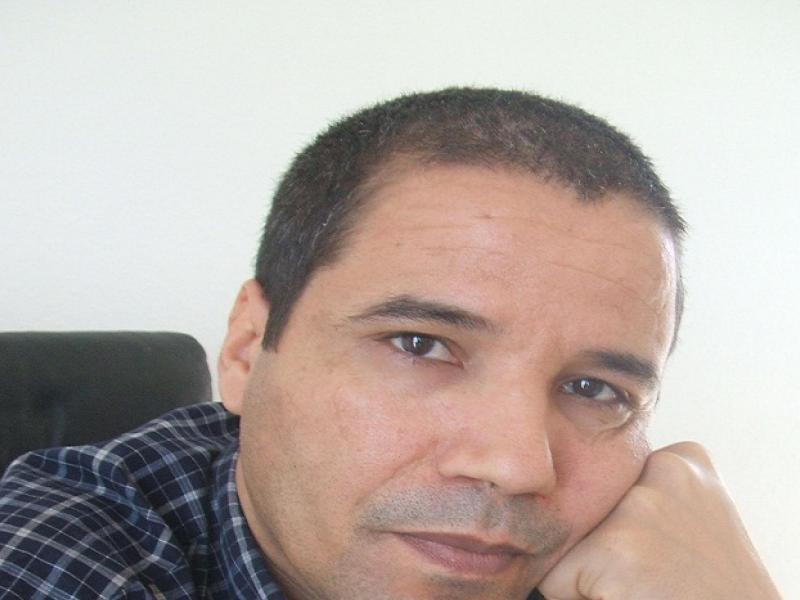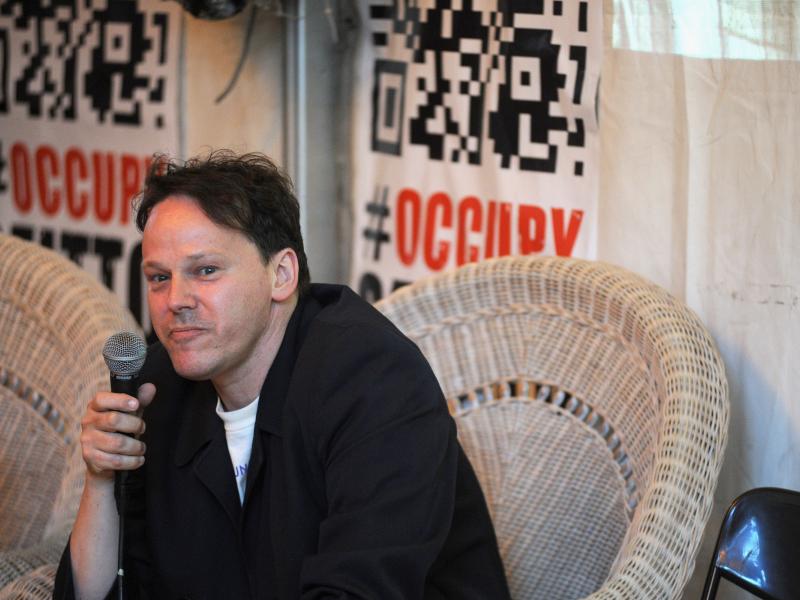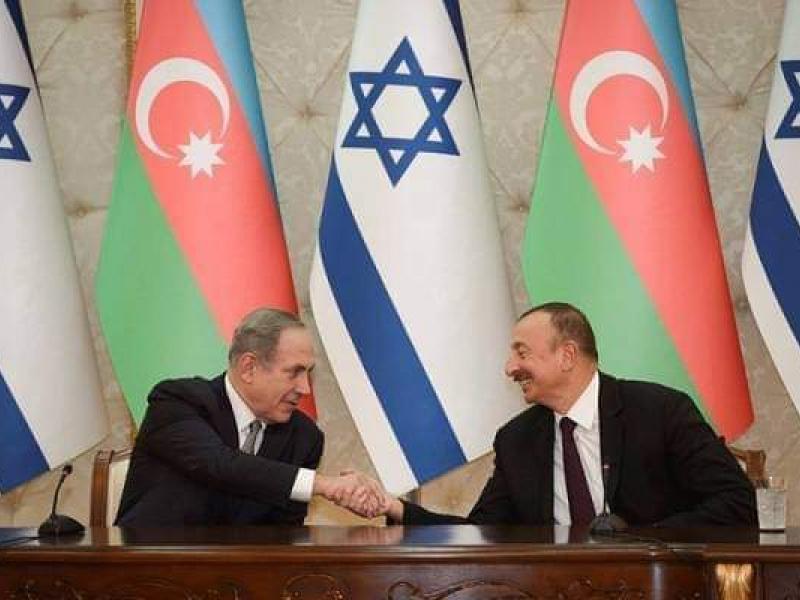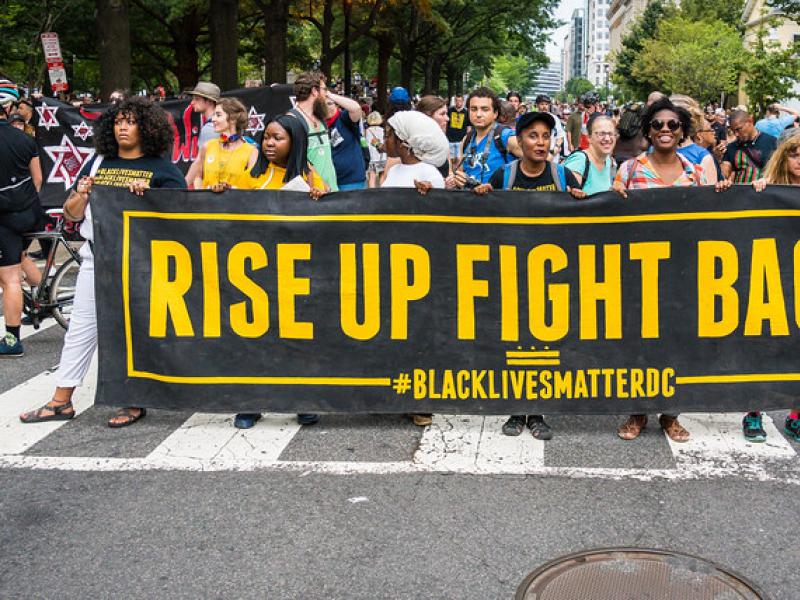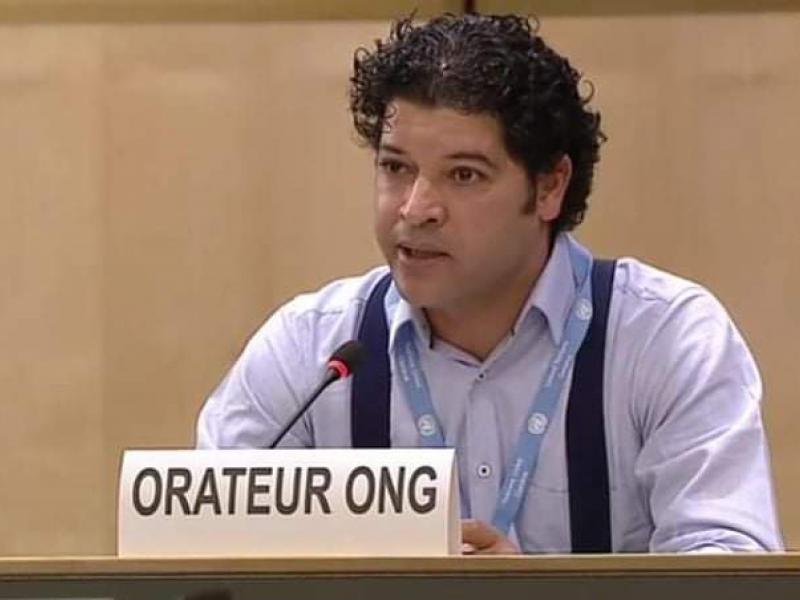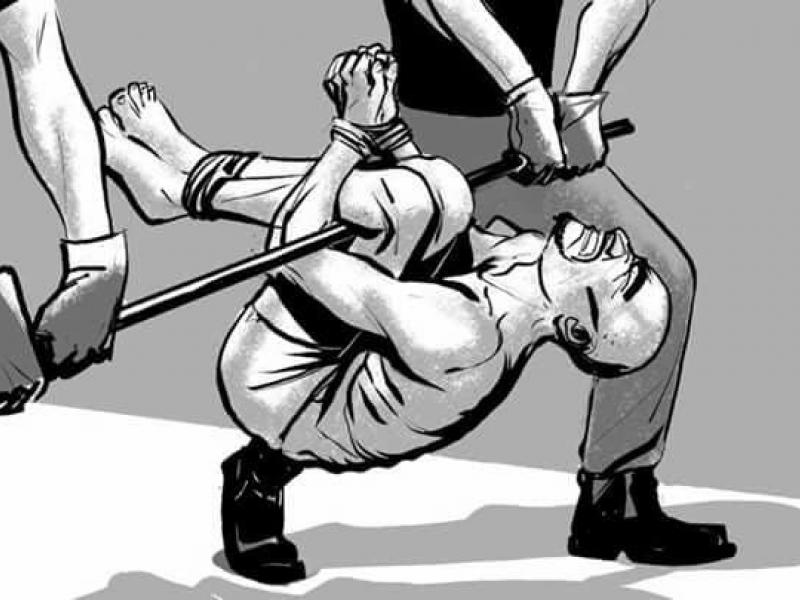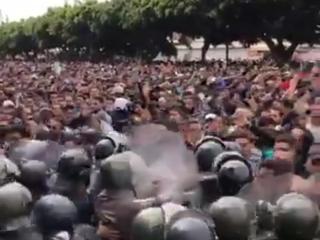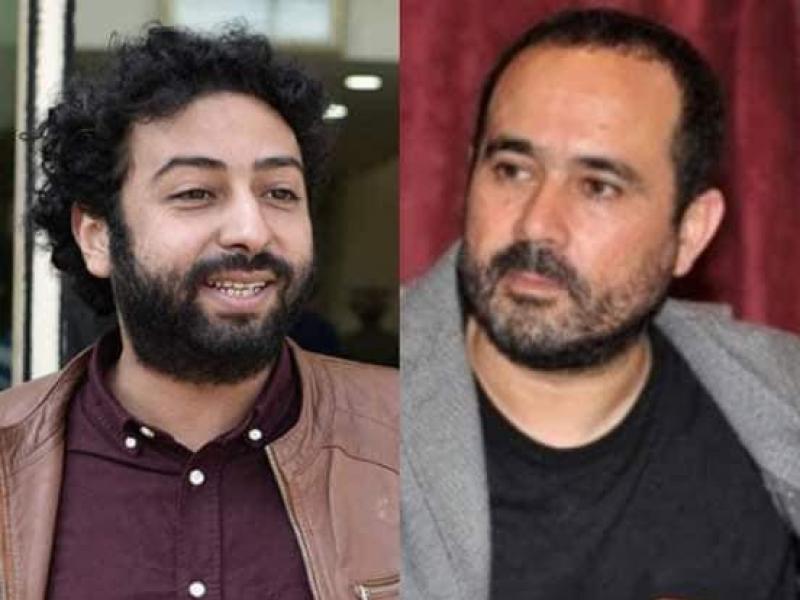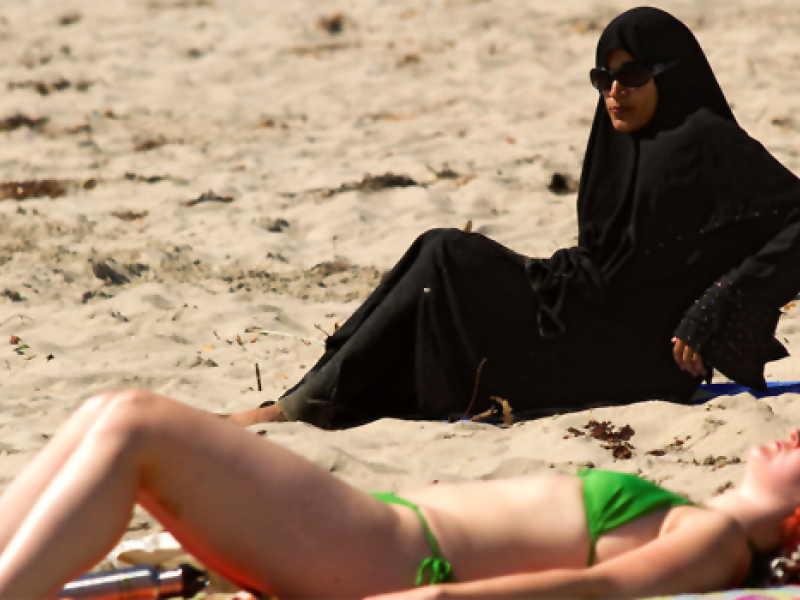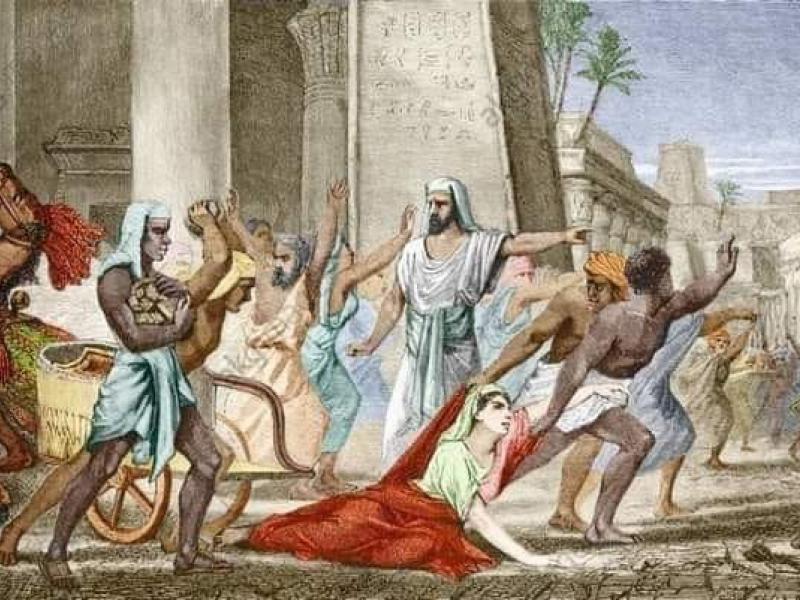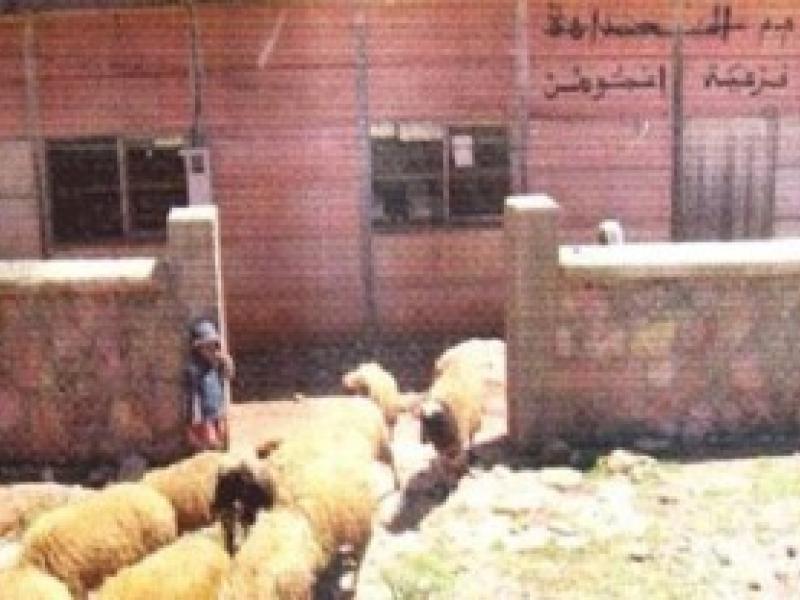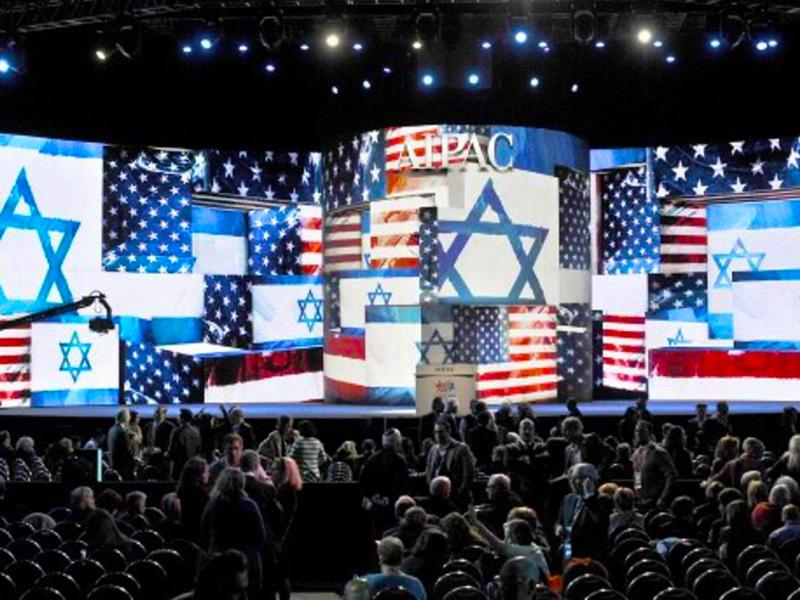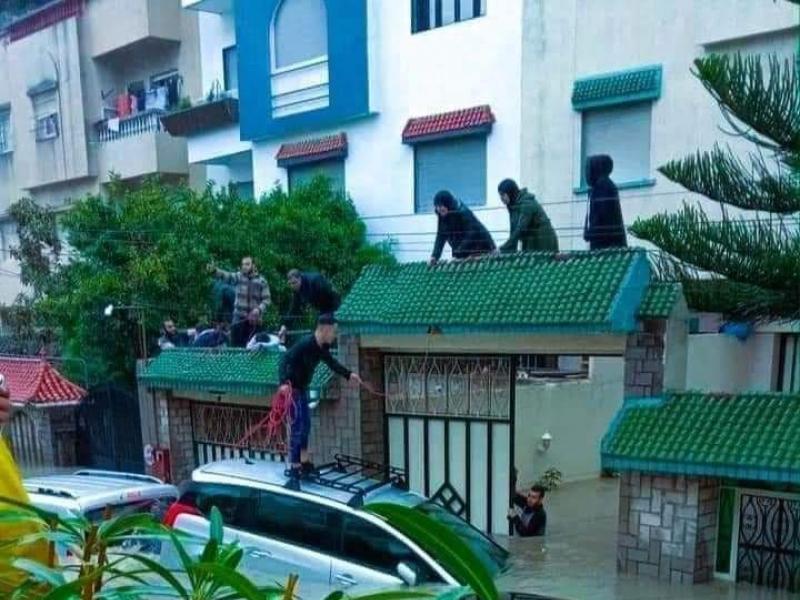
تفاصيل صادمة عن المصنع الذي اودى بحياة العشرا ...
Feb 08, 2021 0
علاقة بكارثة غرق مصنع للأقمشة بطنجة الموغرابية صباح اليوم والذي اودى بحياة العشرات من العمال وج ...

استاذ جامعي يفضح : الشواهد الجامعية تباع وتشت ...
Oct 17, 2020 0
لا حديث الأمس و اليوم في جامعات و كليّات المغريب من شماله إلى جنوبه إلا على هاد السيد، عبد الكب ...
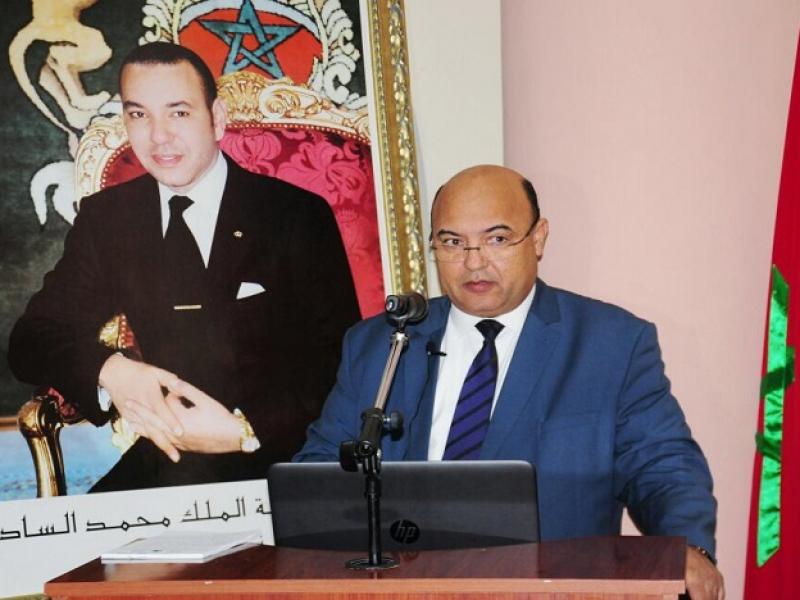
اختلالات في محاربة كورونا (كوفيد19) بالأكاديم ...
Sep 29, 2020 0
كد مجموعة من الأساتذة بالأكاديمية الجهوية للتربية والتكوين بمراكش آسفي، أن التعليم عن بعد غير ...
The Qaids and the Dispossession of Tribes in "Intra-colonial" Morocco
18 Nov 2015 : 16:56
تعليقات: 0
مشاهدات:
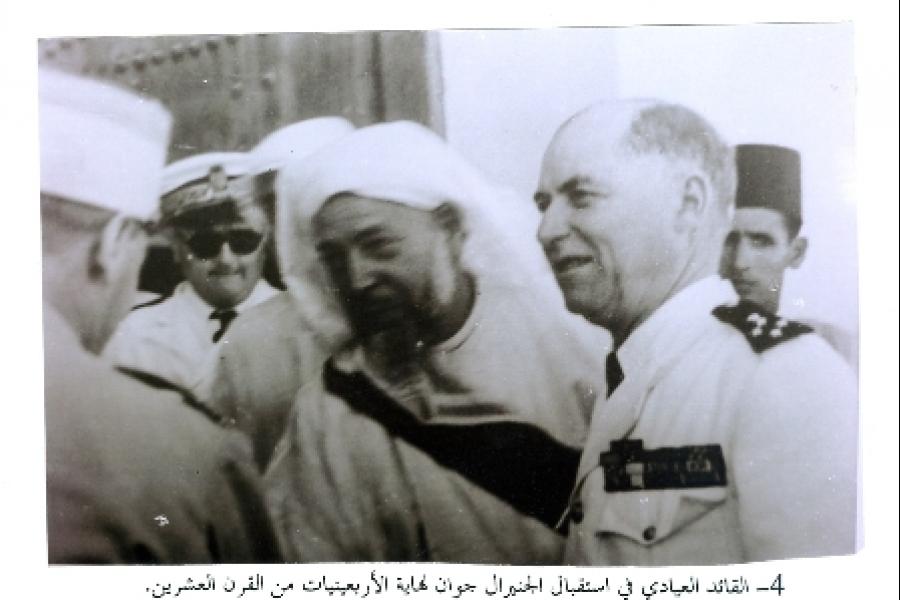
[justify]By Mohammed Maarouf
Up to the protectorate period, the traditional form of state (Makhzen) governed Morocco with an administrative system based on the participation of regional mandarins called qaids. The periphery land named by colonial anthropology blad siba (land [/HTML]
Up to the protectorate period, the traditional form of state (Makhzen) governed Morocco with an administrative system based on the participation of regional mandarins called qaids. The periphery land named by colonial anthropology blad siba (land [/HTML]
By Mohammed Maarouf
Up to the protectorate period, the traditional form of state (Makhzen) governed Morocco with an administrative system based on the participation of regional mandarins called qaids. The periphery land named by colonial anthropology blad siba (land of dissidence) existing beyond the pale was set in contrast with blad l-Makhzen (the land of the pale), the agriculturally rich and economically exploitable regions under the central control of the sultanate (such land during the Protectorate was named ‘le Maroc utile’). Blad siba, from the colonial economics perspective, referred to the geographical zones and entities (mountain chains and the pre-Sahara) sporadically under the control of the Makhzen (such land during the Protectorate was named 'le Maroc unitile'). And because such vast territories were remote from the direct control of the centralized rule of the Makhzen, powerful qaids were appointed there to govern tribes, collect taxes and supervise the agricultural production.
In blad siba, the tradition said that the jma‘a (tribal assembly) ran the agricultural, social and relational affairs of the tribe. As Gellner maintained, this was “a structural rather than an ideological democracy.” In Pierre Bourdieu’s terms, it was lived democracy – ‘démocratie vécue’ – (cit. in Gellner, 1969, p. 28). Reading Montagne from a postcolonial perspective, one actually laments the decline of the tribal democracy in such times and the appearance of despotic figures like qaids who shattered the unity of tribes and thrust them in the yoke of oppression.
We ask the question with Gellner, could it have been plausible to make a direct transition from tribal democracy to modern democratic local government in Morocco (Gellner, 1969, p. 27)? But tribal democracy incorporated within itself its own transgressive politics. It was challenged by the appearance of a single powerful figure ruling the tribe under the title of amghar. Montagne defines the amghar as follows: " ‘Amghar’, pl. ‘Imgharen’. Nom verbal provenant de la racine Mghr, être grand par taille, l’age, la situation sociale ... le mot arabe ‘chikh’ traduit très exactement le mot berbère ‘amghar’. Dans certaines régions de l’Atlas occidental (Mzouda par exemple) on désigne les notables sous le nom d’Inmoghorn, tiré de la même racine. " (1930, p. 271).
How did the amghar (the notable) acquire leadership? The jma‘a (collective assembly of the tribe) was a tribal institution made up of members belonging to the powerful families in the tribe. A chief was elected by the members of the board amid a fierce struggle among all the rest to defend their own interests. The scramble for the position of head ( muqaddem) of the jma‘a always ended with the designation of the chief who had enough support from the members of the assembly.
After several years of exercising locally administrative and judicial functions, the chief seized the opportunity to get rid of the title of muqaddem and declared himself the leader of the tribe, thus acquiring the title of amghar. " Dans toutes les tribus, même là où les institutions oligarchiques ou démocratiques sont le plus complètement acceptées, des chefs s’élèvent par instant au-dessus des titres d’amghar à fonder par la violence ce que de Foucauld a justement appelé le pouvoir despotique " (Montagne, 1930, p. 269).
To reinforce his power, the amghar implemented two antagonistic policies towards the jma‘a and the Makhzen. He promised the jma‘a that he would spare them the burden of taxation and thus reinforced his chiefdom upon them, and at the same time, served the interests of the Mahkzen to gain its favor. Thus the Makhzen started looking for amghars to attract them to its camp by nominating them by dahirs as qaids (Halim 2000, p. 145).
The purpose was to weaken the unity of the tribes and maintain them under control as tax-levied units. Montagne argued that the Makhzen sought to obliterate all signs of jma‘a: "L’unité était jadis un canton, ancienne “taqbilt” indépendante formée d’un certain nombre de mouda‘ ou de jema‘a, aux dimensions presque constantes. A présent, les tribus sont divisées arbitrairement en tiers, en quarts, cinquièmes ou unités plus petites encore qui n’ont plus d’autre fonction que de faciliter la répartition des impôts " ( 1930, p. 377).
Let us consider the example of the tribes of Zayan situated in the heart of the Middle Atlas. They were living autonomous far from Blad l-Makhzen. To annex these tribes to its jurisdiction and make them liable to its taxation, the Makhzen saw in Moha ou Hammou, the amghar of the Zayani tribes, the ideal chief to be converted into an agent / qaid of the Makhzen. Nominated by the Sultan Mulay Al Hassan as qaid of Zayan, Moha brought the whole area under the Makhzen’s control. To quote Montagne’s words, the Makhzen was but an oppressive apparatus that suppressed the volition of tribes and their sense of collectivism:
Telles sont les aspects principaux de la politique et l’organisation du makhzen dans ses relations avec les tribus berbères du Sud du Maroc. Lourde machine qui écrase le pays et fait disparaître les dernières traditions que les chefs autochtones avaient respectées, efface les limites des cantons, le souvenir des alliances anciennes, et ne laisse plus bientôt, en face du Sultan qu’une foule anonyme de sujets dont le rôle unique est de payer l’impôt. (Montagne, 1930, p. 379)
Though there may be an element of truth in what Montagne claims, the Makhzen emerges from a de-colonial perspective, as Laouri maintains, not only as an oppressive machine but as a court of law perpetuating social order and preventing clashes and tribal conflicts.
Yet, there was a divide-and-rule sharifian politics aimed at governing with the least resistance from the tribes. The more the tribes were fractioned into small units governed by amghars nominated as qaids, the more effective the silos style of command operated. Maintaining the country in a provisional order was an effective style of ruling for the Makhzen since it undermined the power of tribes and their chiefs as well as lubricated the process of tax-collection.
Qaids ruled the tribes in the name of organization and order, preventing social anarchy. That was a gradual transformation from tribal self-governing to a total submission to the administration of the Makhzen. Qaids did not only collect taxes for the Makhzen but also for themselves. In the same vein, Montagne maintains: " Le malheur est plus grand encore lorsque le caid est un étranger à la tribu; tous sont alors “mangés” sans distinction d’origine, tandis que prospèrent autour de la kasba les parents et les serviteurs du maître, qui font même parfois sortir leurs richesses du territoire pour les envoyer dans leur propre tribu " (1930, p. 384). Most Qaids accumulated fortunes thanks to their centralizing repression. Sometimes the Sultan might intervene and arrest abusive qaids. Mulay Al Hasan, for instance, appointed administrators called supervisors (oumana) to counterpose the power of qaids in a country where the chief had been for centuries the enemy of the collective assembly. As a matter of fact, qaids’ names became famous all over the country. They dispossessed tribes, misused power, and exerted all forms of repression on the population. It was called the “politics of the great qaids” like the politics of Al-Glaoui, Al-Gontafi and El-Metougi.
Si Hmida, a 60 years-old man from the region of Tarudant, speaks about the mistreatment of qaids as follows:
At night the Moqaddem would call each of us by name to the kulfa [a compulsory work duty]. Fathers sent their sons … I carried soil, water, and mortar. We carried the beams, and our mules and camels carried the wood. We also needed mules and camels to work the road and bridges … and when we returned to the village, we also worked for the caid … when our crops were ready, the first harvest had to go to the caid. Otherwise, you had to buy your freedom from the Moqaddem, the shaykh, or the caid himself. I lived through all of that … anybody who refused went to prison and was beaten. Have you seen the prison? It’s there in the house. Later there was the French prison at Taroudant…. We preferred that one. (Hammoudi, 1997, p. 103)
Such stories were very common all over Morocco during the colonial period. The underprivileged masses were drilled by sheer force to succumb to the domination of the administrators of the Makhzen. Small fellahs internalized their duty to serve the qaid and his retinue. Those who went against the official commands were tortured in public to terrorize the rest of the population and incapacitate their volition to act. Here is a recent example from Qal‘at Sraghna in 1954, showing that the ritual of torture is still at work:
During the summer of 1954, less than two years before independence, one of the Sraghna’s greatest caids – a friend of the pasha, a famed hunter of man and game, a polygamist, and a distinguished horseman – prepared himself to do justice in his court (mahkama), which dominated the weekly souk. In front of the caid, shimmering in the afternoon sun, a copper teakettle simmered. The caid’s retinue crouched about him on rugs. Musicians had just struck an ‘ayta when rumor of a bomb suddenly struck the crowd of plaintiffs with a panic that dispersed them in utter disorder. In the souk, the multitude moved back and forth like sea waves. Then the panic came to a halt. News that the bomb had been found buried under the galsa, the space in which the caid was seated, and had been unearthed and dismantled spread just as quickly as the first rumor had. A bit of smoke from the wick had seeped up from the ground and betrayed the bomb’s location. The caid proved to be unflappable. Moments later, two men with hands tied behind their backs were poked, pushed, and prodded before him. Everyone understood these were wataniyin (nationalists), suspected of having planted the bomb. As the huge crowd watched, the caid ordered the men to be “plucked” [amara bitaryishihim]. His militia forced them to their knees and pulled out their beards tuft by tuft; blood ran down their cheeks. Then they were thrown in a car and sent to Marrakech under heavy guard. (Hammoudi, 1997, p. 131)
This incident was a topic of much discussion in the ensuing months. Everyone was speaking about the emasculation of the nationalists. The public ‘shearing’ was considered an act of castration bereaving men of their tribal identity, virility and manhood. Young adults laughed over the fact that old men “put their honor in their beards.” This incident therefore assumed the same importance people might give to pressing topics like despotism of qaids, nationalism and the political situation in the Country (Hammoudi, 1997, p. 131).
Generally, the qaids, sheikhs (agents working under the qaid's supervision) and muqaddems, who ill-treated the masses of peasants and usurped their land, were not tried for their crimes after independence. Al-Haj T’hami Al-Glawi was a good case in point. He was a qaid whose name, title and prosperity were carved in the memory of the population. In 1958, he possessed 12000 ha of land. He had shares in cobalt and manganese mines. He also monopolized the distribution of water in the region of Marrakech, imposing taxes on people and controlling the olive and almond crops commerce (Halim, 2000, p. 146). Despite the tortures and crimes he perpetrated during the days of Moroccans’ struggle for independence, he was not judged afterwards. He refused to be exiled and carried on living with Moroccans though in oblivion. Of course, secret agencies assassinated or kidnapped Al-Glawi’s accomplices and comrades like l-qaid Tyuti, but most of the members of this network (khulfan (caliphs), shuyukh (sheiks), muqaddamin (supervisors) and jarraya (collectors) have escaped judgment and accountability. (Hammoudi, 2000, p. 168-9)
Such historical oppression of qaids has socially constructed terrorized "intra-colonized" subjects (social identities shaped by internal colonialism) and a cultural phobia of terror from the politics of governance in the history of Morocco. The agents of the Makhzen who destroyed crops, dwellings and human beings have left an indelible scar in popular imagination. What filled people’s hearts with terror was not only the pillage and dispossession of tribes but also the decapitation of heads that was a common practice in the nineteenth century, think of l-Basha Hammou of Taroudant who died in 1900, and see the letter written in 1871 by Sidi Mohammed Ben Abderrahman; at the end of his report of a glorious victory over the powerful Rehamna tribe in the Marrakech region, he wrote: "And you will receive the heads of the dead for display at the gate of the city, to serve as an example to those who reflect on it and as a memory for those who can remember."(Hammoudi, 1997, p. 63).
It is in the popular saga of saints that you may discover a rich archive of the ill-treatment of qaids and the masses' armed and cultural resistance to domestic intra-colonial tyranny in Morocco (for further treatment of the psychological effect of ruling terror on peoples' collective memory, see my previous article with Paul Willis on "Jinn possession as a form of cultural resistance").
Dr. Mohammed Maarouf, Chouaib Doukkali University, Morocco

Up to the protectorate period, the traditional form of state (Makhzen) governed Morocco with an administrative system based on the participation of regional mandarins called qaids. The periphery land named by colonial anthropology blad siba (land of dissidence) existing beyond the pale was set in contrast with blad l-Makhzen (the land of the pale), the agriculturally rich and economically exploitable regions under the central control of the sultanate (such land during the Protectorate was named ‘le Maroc utile’). Blad siba, from the colonial economics perspective, referred to the geographical zones and entities (mountain chains and the pre-Sahara) sporadically under the control of the Makhzen (such land during the Protectorate was named 'le Maroc unitile'). And because such vast territories were remote from the direct control of the centralized rule of the Makhzen, powerful qaids were appointed there to govern tribes, collect taxes and supervise the agricultural production.
In blad siba, the tradition said that the jma‘a (tribal assembly) ran the agricultural, social and relational affairs of the tribe. As Gellner maintained, this was “a structural rather than an ideological democracy.” In Pierre Bourdieu’s terms, it was lived democracy – ‘démocratie vécue’ – (cit. in Gellner, 1969, p. 28). Reading Montagne from a postcolonial perspective, one actually laments the decline of the tribal democracy in such times and the appearance of despotic figures like qaids who shattered the unity of tribes and thrust them in the yoke of oppression.
We ask the question with Gellner, could it have been plausible to make a direct transition from tribal democracy to modern democratic local government in Morocco (Gellner, 1969, p. 27)? But tribal democracy incorporated within itself its own transgressive politics. It was challenged by the appearance of a single powerful figure ruling the tribe under the title of amghar. Montagne defines the amghar as follows: " ‘Amghar’, pl. ‘Imgharen’. Nom verbal provenant de la racine Mghr, être grand par taille, l’age, la situation sociale ... le mot arabe ‘chikh’ traduit très exactement le mot berbère ‘amghar’. Dans certaines régions de l’Atlas occidental (Mzouda par exemple) on désigne les notables sous le nom d’Inmoghorn, tiré de la même racine. " (1930, p. 271).
How did the amghar (the notable) acquire leadership? The jma‘a (collective assembly of the tribe) was a tribal institution made up of members belonging to the powerful families in the tribe. A chief was elected by the members of the board amid a fierce struggle among all the rest to defend their own interests. The scramble for the position of head ( muqaddem) of the jma‘a always ended with the designation of the chief who had enough support from the members of the assembly.
After several years of exercising locally administrative and judicial functions, the chief seized the opportunity to get rid of the title of muqaddem and declared himself the leader of the tribe, thus acquiring the title of amghar. " Dans toutes les tribus, même là où les institutions oligarchiques ou démocratiques sont le plus complètement acceptées, des chefs s’élèvent par instant au-dessus des titres d’amghar à fonder par la violence ce que de Foucauld a justement appelé le pouvoir despotique " (Montagne, 1930, p. 269).
To reinforce his power, the amghar implemented two antagonistic policies towards the jma‘a and the Makhzen. He promised the jma‘a that he would spare them the burden of taxation and thus reinforced his chiefdom upon them, and at the same time, served the interests of the Mahkzen to gain its favor. Thus the Makhzen started looking for amghars to attract them to its camp by nominating them by dahirs as qaids (Halim 2000, p. 145).
The purpose was to weaken the unity of the tribes and maintain them under control as tax-levied units. Montagne argued that the Makhzen sought to obliterate all signs of jma‘a: "L’unité était jadis un canton, ancienne “taqbilt” indépendante formée d’un certain nombre de mouda‘ ou de jema‘a, aux dimensions presque constantes. A présent, les tribus sont divisées arbitrairement en tiers, en quarts, cinquièmes ou unités plus petites encore qui n’ont plus d’autre fonction que de faciliter la répartition des impôts " ( 1930, p. 377).
Let us consider the example of the tribes of Zayan situated in the heart of the Middle Atlas. They were living autonomous far from Blad l-Makhzen. To annex these tribes to its jurisdiction and make them liable to its taxation, the Makhzen saw in Moha ou Hammou, the amghar of the Zayani tribes, the ideal chief to be converted into an agent / qaid of the Makhzen. Nominated by the Sultan Mulay Al Hassan as qaid of Zayan, Moha brought the whole area under the Makhzen’s control. To quote Montagne’s words, the Makhzen was but an oppressive apparatus that suppressed the volition of tribes and their sense of collectivism:
Telles sont les aspects principaux de la politique et l’organisation du makhzen dans ses relations avec les tribus berbères du Sud du Maroc. Lourde machine qui écrase le pays et fait disparaître les dernières traditions que les chefs autochtones avaient respectées, efface les limites des cantons, le souvenir des alliances anciennes, et ne laisse plus bientôt, en face du Sultan qu’une foule anonyme de sujets dont le rôle unique est de payer l’impôt. (Montagne, 1930, p. 379)
Though there may be an element of truth in what Montagne claims, the Makhzen emerges from a de-colonial perspective, as Laouri maintains, not only as an oppressive machine but as a court of law perpetuating social order and preventing clashes and tribal conflicts.
Yet, there was a divide-and-rule sharifian politics aimed at governing with the least resistance from the tribes. The more the tribes were fractioned into small units governed by amghars nominated as qaids, the more effective the silos style of command operated. Maintaining the country in a provisional order was an effective style of ruling for the Makhzen since it undermined the power of tribes and their chiefs as well as lubricated the process of tax-collection.
Qaids ruled the tribes in the name of organization and order, preventing social anarchy. That was a gradual transformation from tribal self-governing to a total submission to the administration of the Makhzen. Qaids did not only collect taxes for the Makhzen but also for themselves. In the same vein, Montagne maintains: " Le malheur est plus grand encore lorsque le caid est un étranger à la tribu; tous sont alors “mangés” sans distinction d’origine, tandis que prospèrent autour de la kasba les parents et les serviteurs du maître, qui font même parfois sortir leurs richesses du territoire pour les envoyer dans leur propre tribu " (1930, p. 384). Most Qaids accumulated fortunes thanks to their centralizing repression. Sometimes the Sultan might intervene and arrest abusive qaids. Mulay Al Hasan, for instance, appointed administrators called supervisors (oumana) to counterpose the power of qaids in a country where the chief had been for centuries the enemy of the collective assembly. As a matter of fact, qaids’ names became famous all over the country. They dispossessed tribes, misused power, and exerted all forms of repression on the population. It was called the “politics of the great qaids” like the politics of Al-Glaoui, Al-Gontafi and El-Metougi.
Si Hmida, a 60 years-old man from the region of Tarudant, speaks about the mistreatment of qaids as follows:
At night the Moqaddem would call each of us by name to the kulfa [a compulsory work duty]. Fathers sent their sons … I carried soil, water, and mortar. We carried the beams, and our mules and camels carried the wood. We also needed mules and camels to work the road and bridges … and when we returned to the village, we also worked for the caid … when our crops were ready, the first harvest had to go to the caid. Otherwise, you had to buy your freedom from the Moqaddem, the shaykh, or the caid himself. I lived through all of that … anybody who refused went to prison and was beaten. Have you seen the prison? It’s there in the house. Later there was the French prison at Taroudant…. We preferred that one. (Hammoudi, 1997, p. 103)
Such stories were very common all over Morocco during the colonial period. The underprivileged masses were drilled by sheer force to succumb to the domination of the administrators of the Makhzen. Small fellahs internalized their duty to serve the qaid and his retinue. Those who went against the official commands were tortured in public to terrorize the rest of the population and incapacitate their volition to act. Here is a recent example from Qal‘at Sraghna in 1954, showing that the ritual of torture is still at work:
During the summer of 1954, less than two years before independence, one of the Sraghna’s greatest caids – a friend of the pasha, a famed hunter of man and game, a polygamist, and a distinguished horseman – prepared himself to do justice in his court (mahkama), which dominated the weekly souk. In front of the caid, shimmering in the afternoon sun, a copper teakettle simmered. The caid’s retinue crouched about him on rugs. Musicians had just struck an ‘ayta when rumor of a bomb suddenly struck the crowd of plaintiffs with a panic that dispersed them in utter disorder. In the souk, the multitude moved back and forth like sea waves. Then the panic came to a halt. News that the bomb had been found buried under the galsa, the space in which the caid was seated, and had been unearthed and dismantled spread just as quickly as the first rumor had. A bit of smoke from the wick had seeped up from the ground and betrayed the bomb’s location. The caid proved to be unflappable. Moments later, two men with hands tied behind their backs were poked, pushed, and prodded before him. Everyone understood these were wataniyin (nationalists), suspected of having planted the bomb. As the huge crowd watched, the caid ordered the men to be “plucked” [amara bitaryishihim]. His militia forced them to their knees and pulled out their beards tuft by tuft; blood ran down their cheeks. Then they were thrown in a car and sent to Marrakech under heavy guard. (Hammoudi, 1997, p. 131)
This incident was a topic of much discussion in the ensuing months. Everyone was speaking about the emasculation of the nationalists. The public ‘shearing’ was considered an act of castration bereaving men of their tribal identity, virility and manhood. Young adults laughed over the fact that old men “put their honor in their beards.” This incident therefore assumed the same importance people might give to pressing topics like despotism of qaids, nationalism and the political situation in the Country (Hammoudi, 1997, p. 131).
Generally, the qaids, sheikhs (agents working under the qaid's supervision) and muqaddems, who ill-treated the masses of peasants and usurped their land, were not tried for their crimes after independence. Al-Haj T’hami Al-Glawi was a good case in point. He was a qaid whose name, title and prosperity were carved in the memory of the population. In 1958, he possessed 12000 ha of land. He had shares in cobalt and manganese mines. He also monopolized the distribution of water in the region of Marrakech, imposing taxes on people and controlling the olive and almond crops commerce (Halim, 2000, p. 146). Despite the tortures and crimes he perpetrated during the days of Moroccans’ struggle for independence, he was not judged afterwards. He refused to be exiled and carried on living with Moroccans though in oblivion. Of course, secret agencies assassinated or kidnapped Al-Glawi’s accomplices and comrades like l-qaid Tyuti, but most of the members of this network (khulfan (caliphs), shuyukh (sheiks), muqaddamin (supervisors) and jarraya (collectors) have escaped judgment and accountability. (Hammoudi, 2000, p. 168-9)
Such historical oppression of qaids has socially constructed terrorized "intra-colonized" subjects (social identities shaped by internal colonialism) and a cultural phobia of terror from the politics of governance in the history of Morocco. The agents of the Makhzen who destroyed crops, dwellings and human beings have left an indelible scar in popular imagination. What filled people’s hearts with terror was not only the pillage and dispossession of tribes but also the decapitation of heads that was a common practice in the nineteenth century, think of l-Basha Hammou of Taroudant who died in 1900, and see the letter written in 1871 by Sidi Mohammed Ben Abderrahman; at the end of his report of a glorious victory over the powerful Rehamna tribe in the Marrakech region, he wrote: "And you will receive the heads of the dead for display at the gate of the city, to serve as an example to those who reflect on it and as a memory for those who can remember."(Hammoudi, 1997, p. 63).
It is in the popular saga of saints that you may discover a rich archive of the ill-treatment of qaids and the masses' armed and cultural resistance to domestic intra-colonial tyranny in Morocco (for further treatment of the psychological effect of ruling terror on peoples' collective memory, see my previous article with Paul Willis on "Jinn possession as a form of cultural resistance").
Dr. Mohammed Maarouf, Chouaib Doukkali University, Morocco

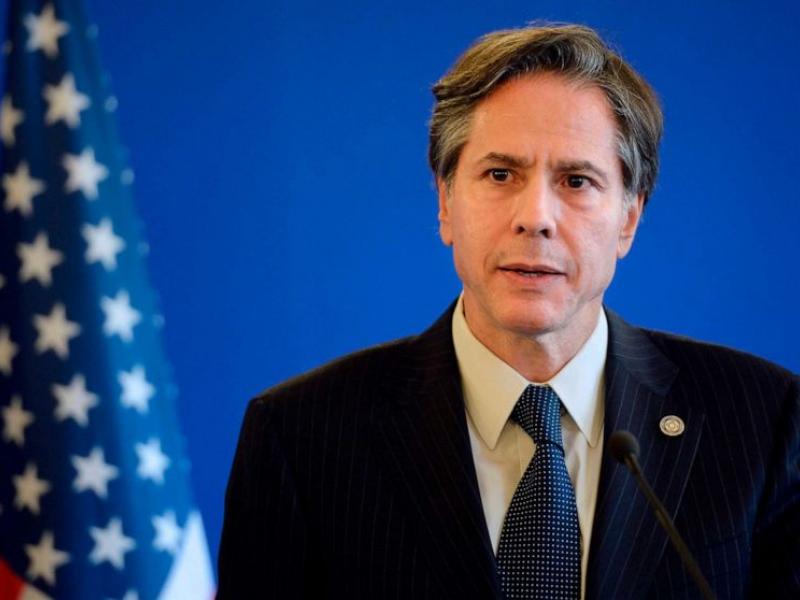
وزير الخارجية الأمريكي يصدم الموغريب بتصريح أ ...
Jan 27, 2021 0
صوت اليوم مجلس الشيوخ الامريكي بالقبول على تعيين انطوني بلينكن في منصب سكرتير الخارجية في إدارة ...
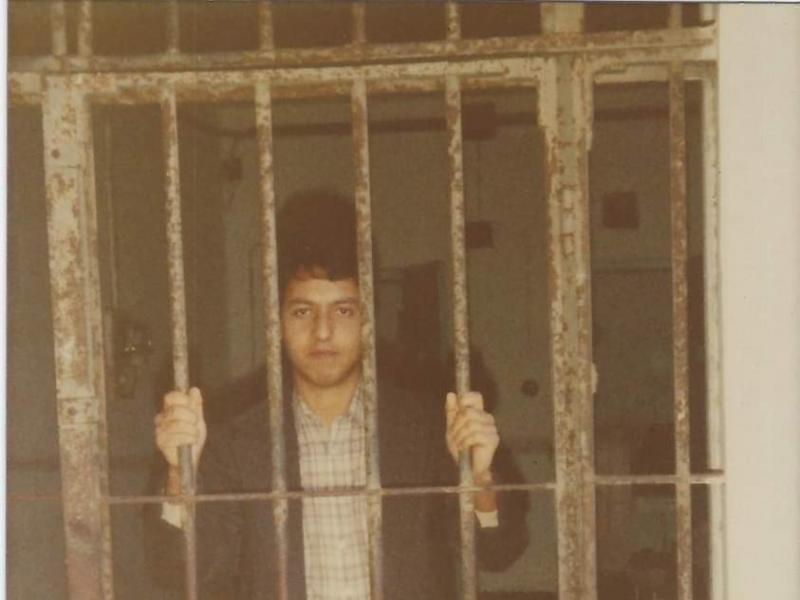
مبعوث أممي يستعيد سنوات تعذيبه داخل السجون ال ...
Jan 10, 2021 0
عبر تدوينة فايسبوكية استعاد المناضل اليساري السابق جمال بنعمر والمسشار الخاص السابق الامين الع ...
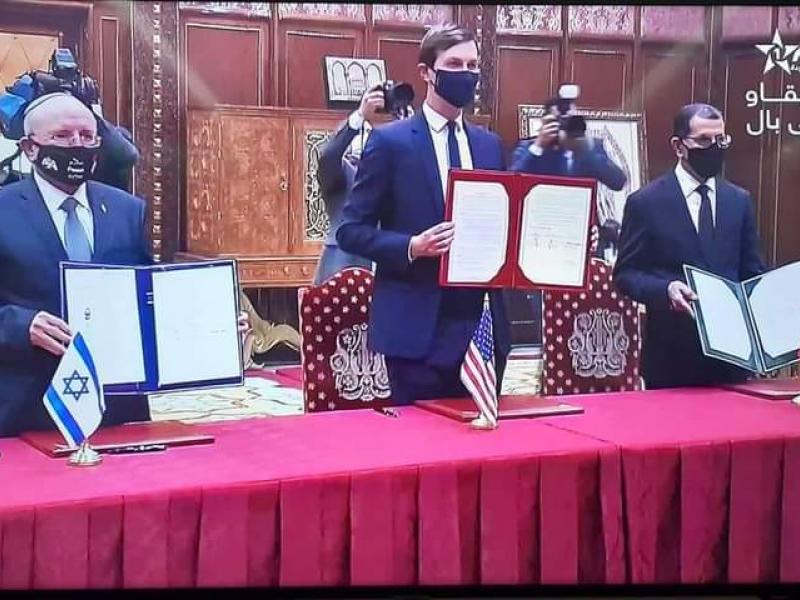
الاعلان الرسمي المشترك بين أمريكا والمغرب واسرائيل
Dec 22, 2020 0
الرباط – في ما يلي النص الكامل للإعلان المشترك الذي وقعته اليوم الثلاثاء المملكة المغربية والول ...
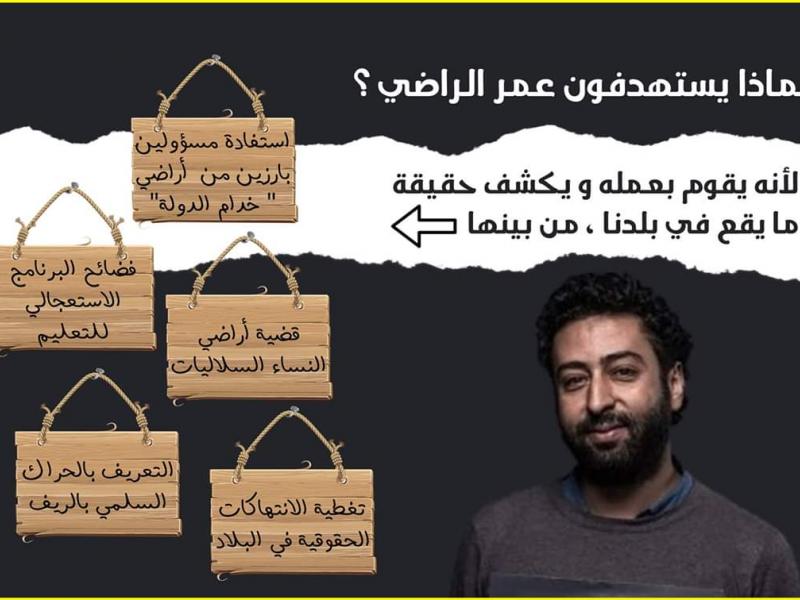
عمر الراضي : مارسنا الجنس رضائيا كراشدين وسأذ ...
Jul 29, 2020 0
بعدما قررت الدولة المغربية متابعة الصحافي عمر الراضي في حالة اعتقال بتهم غبية وسريالية اي اغتصا ...
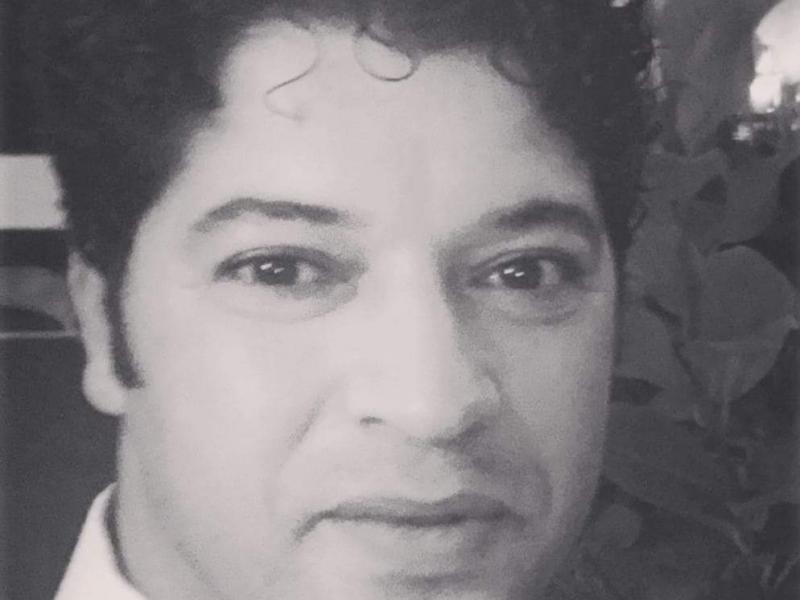
عزيز إدمين : تعالو لنطلع على الارقام الفلكية عن الربع الحقوقي بالمغرب !!
Aug 19, 2021 0
الريع الحقوقي ...
أقصبي: تقرير لجنة النمودج التنموي مليء بالمحر ...
May 31, 2021 1
تقرير لجنة النموذج التنموي مليء بالمحرمات وبقي في حدود الخطوط الحمراء
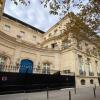
ملك المغرب يبرع عائلته بمنزل باريسي قيمته 80 مليار
Oct 02, 2020 0
إقتنى ملك المغرب محمد السادس مؤخرا إقامة فخمة في أحد أغلى الاحياء الباريسية بمبلغ 80 مليون يورو ...
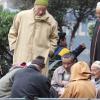
إحصائيات صادمة عن المغرب
Aug 26, 2020 0
أرقام صادمة كشفت عنها الندوة الرقمية المنظمة من قبل الشبيبة العاملة المغربية حول موضوع "الحماية ...
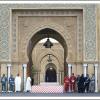
بلومبيرغ : بسبب كوفيد 19 المغرب يغلق الهامش ا ...
Jul 28, 2020 0
المغرب ينقلب على الديمقراطية بسبب جائحة كورونا ، هكذا عنونت أحد اشهر الصحف الاقتصادية بأمريكا ب ...
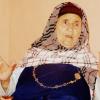
وفاة الرايسة "خدوج تاحلوشت" : صوت الاباء والابداع
Jun 04, 2019 0
وفاة الرايسة "خدّوج تاحلوشت": صوت الإباء اللاذع

"سورة كورونا" تلقي بشابة تونسية في السجن
Jul 16, 2020 0
قضت المحكمة الابتدائية بتونس العاصمة بسجن المدونة التونسية آمنة الشرقي لستة اشهر واداء غرامة قدرها الفي دينار بتهمة الدعوة والتحريض على الكراهية بين الاديان والاجناس والسكان ولذلك على خلفية اعاد ...
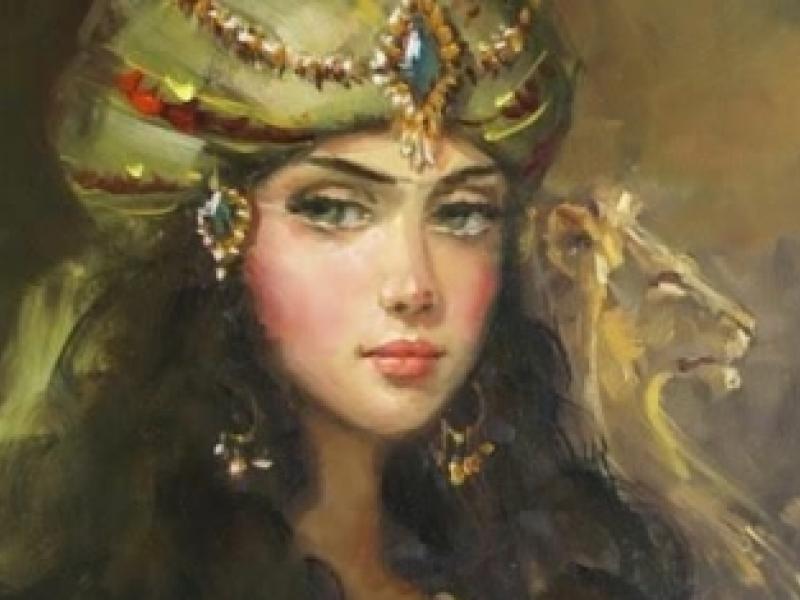
أروى القيروانية.. المرأة التي ألزمت أبا جعفر المنصور بأول عقد يمنع تعدد الزوجات في الإسلام
Jul 06, 2020 0
بقلم اسماء رمضان
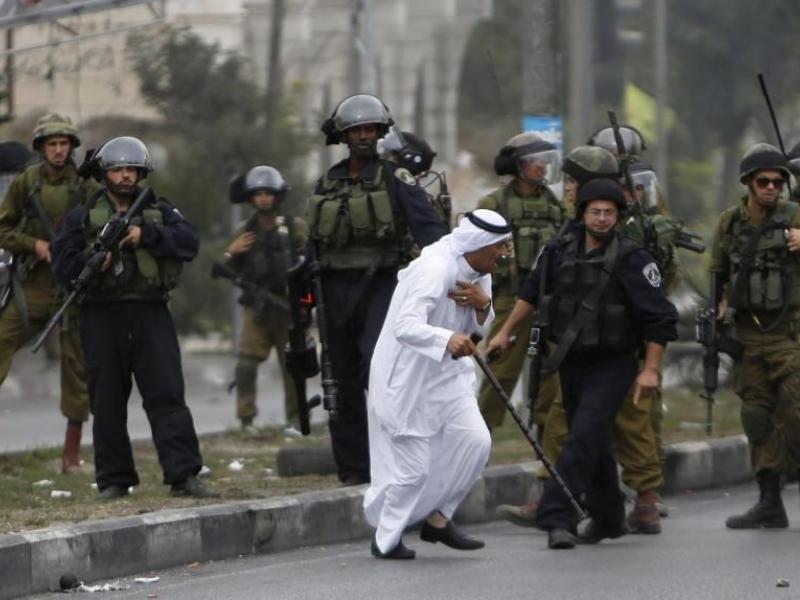
وزارة الداخلية المغربية تمنع مسيرة فلسطين
May 19, 2021 0
قررت السلطات المغربية منع المسيرة الشعبية المقرر تنظيمها بالعاصمة الرباط يوم الاحد 23 ماي الجار ...

كوميساريا تامسنا تتستر على بوليسي عنف استادة ...
Apr 23, 2021 0
تعرضت الاستاة هدى جبيري لاعتداء عنيف بسوق قرية تامسنا من قبل بوليسي متعجرف بعدما رفضت الادعان ل ...
وتستمر فضائح مستشفى ابن رشد بالدار البيضاء
Apr 06, 2021 0
نصيب من الفضائح الصحية يشهده المستشفى الجامعي ابن رشد بالدار البيضاء والغالب فيه هو «طرد المرض ...

